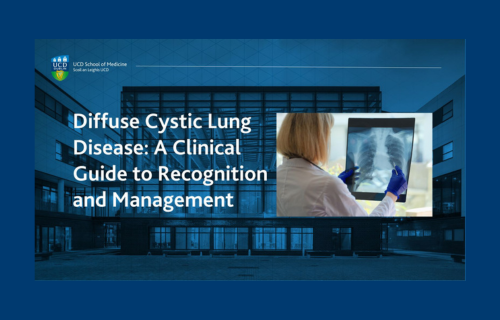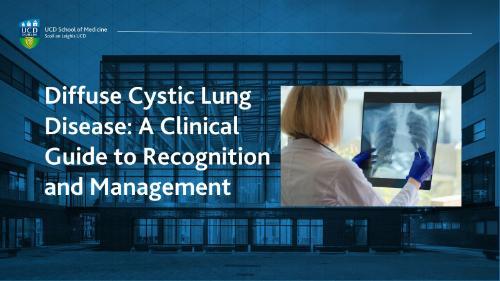Diffuse Cystic Lung Disease: A Clinical Guide to Recognition and Management
Friday, 23 August, 2024
Share

Congratulations to School of Medicine’s Assoc. Professor  Alessandro Franciosi, Dr David Murphy and Assoc. Professor Cormac McCarthy and their fellow University of Cincinnati collaborators on the publication of their clinical guide in CHEST (2024), titled Diffuse Cystic Lung Disease: A Clinical Guide to Recognition and Management.
Alessandro Franciosi, Dr David Murphy and Assoc. Professor Cormac McCarthy and their fellow University of Cincinnati collaborators on the publication of their clinical guide in CHEST (2024), titled Diffuse Cystic Lung Disease: A Clinical Guide to Recognition and Management.
Topic Importance
Diffuse cystic lung diseases (DCLDs) represent a group of pathophysiologically heterogeneous entities that share a common radiological phenotype of multiple thin-walled pulmonary cysts. DCLDs differ from the typical fibroinflammatory interstitial lung diseases in their epidemiology, clinical presentation, molecular pathogenesis, and therapeutic approaches, making them worthy of a distinct classification. The importance of timely and accurate identification of DCLDs is heightened by the impact on patient management including recent discoveries of targeted therapeutic approaches for some disorders.
Review findings
This article offers a practical framework for evaluating patients with DCLD indicating the most appropriate and current diagnostic and management approaches. We focus on the DCLDs that are most likely to be encountered by practicing pulmonologists: lymphangioleiomyomatosis, pulmonary Langerhans cell histiocytosis, Birt-Hogg-Dubé syndrome, and lymphoid interstitial pneumonia. Chest computed tomography is the most informative non-invasive diagnostic modality to identify DCLDs. Thereafter, instituting a structured approach to high-yield associated factors such as medical, social and family history, as well as renal and dermatological findings increases the likelihood of identifying DCLDs and achieving a diagnosis.
Summary
While the individual diseases that comprise the DCLD family are rare, taken together DCLDs can be encountered more frequently in clinical practice than commonly perceived. An increased eagerness among general pulmonary physicians to recognise these entities, coupled with a practical and systematic clinical approach to examinations and investigations is required to improve case finding, allow earlier intervention, and reduce morbidity and mortality.
To read more visit: (opens in a new window)https://journal.chestnet.org/article/S0012-3692(24)04923-7/fulltext